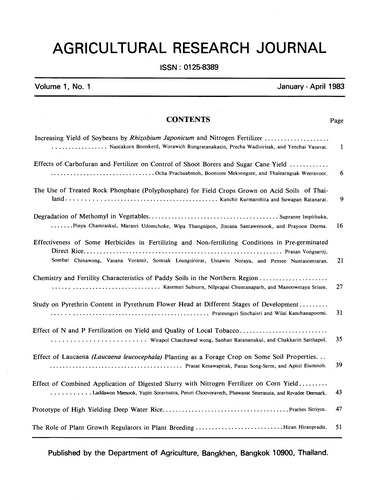The Role of Plant Growth Regulators in Plant Breeding
Abstract
The role of plant growth regulators in plant breeding can be summarized as follow: 1. Increased fruit set. the high frequency with which fruits drop from the plant at various stages of grwoth is reduced and, therefore, more seeds can be obtained; 2. Overcoming incompatibility. Incompatibility can occur either as self-incompatibility or cross-incompatibility. These cross and self-incompatibilityes or sterilities may offer seious obstacles to a breeding program. The application of IAA, NAA, NAAm, BA, and 2, 4, 5-T can solve incompatibility problems in many plant species; 3. Flower induction. the frequent failure to flower of many plant species with good characteristics in disadvantageous to plant breeders. Certain plant species do not flower unless growth is interrupted by a cold-induced dormancy or by a long-day photoperiod. These can be overcome by the application of certain plant growth regulators, 4. Modification of sex expression. One of the most dramatic changs achieved with growth regulators has been the alteration of sex expression. Modification of sex has great potential for plant breeding. Heterostylism can also be induced in certain plant species. A heterostylous condition is one in which the stigma is existence of such condition might facilitate hybridization without the necessity of hand emasuclation; 5. Polyploidy/ variation in chromosome number is referred to as polyploidy. Polyploidy may occue spontaneously or may be artificially induced by special treatment. Polyploidy is used in a number of important ways in breeding and, thus, ploidy manipulations have become a valuable tool in breeding. There has been great interest in the use of polyploidy as a means of extending variability by creating new species or by transferring genes from other species and, thus, a breeder can change plants to better suit his needs. Certain plant growth regulators are essential in tissue culture techniques to induce cell expansion, cell division, morphogenesis of callus formation to develop into roots, stema and, finally, a complete plant.
Downloads
Published
How to Cite
Issue
Section
License
Thai Agricultural Research Journal



